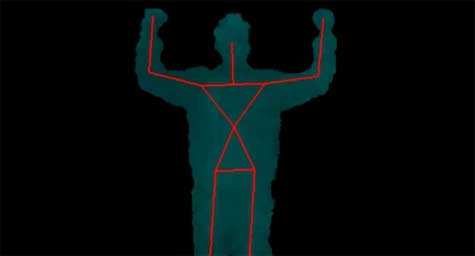-
"Gor is a simple http traffic replication tool written in Go. Its main goal is to replay traffic from production servers to staging and dev environments." Handy to know about.
-
"While collaborating with the geniuses at Bot & Dolly in beautiful San Francisco, Munkowitz was tasked to Design Direct a truly unique piece called BOX.. The piece was originally supposed to function as a Technology Demo, but Munkowitz and the team quickly realized it's visual potential and transformed it into a Design and Performance Piece… The resulting short film is a one-of-a-kind visual and technological achievement due to the very special combination of talent and gear behind the doors of the B&D facility…" Projection mapping and motion control all at once; very clever, sure. But it's the art direction of the whole performance (and the camera's dollybot is very much part of that) that really grabbed me – especially 'Escape'.
-
""Prisms" is fully algorithmic. There are no cuts, just one continuous generative animation. All decisions (camera work, movements, formations, etc…) are made by my system's interpretation of the audio track. My work was creating the system and then curating its output or, to put it another way, I just wrote a computer algorithm, and the computer did it all."
-
"The miniE shield is designed as an Arduino shield that holds all required hardware components to sport the miniEngine motion-control-system for timelapse photography." Iiinteresting. (Motor control / camera control all at once).
-
"A lot of people dismissed it as a Wiimote knockoff… but as I see it, that LED light changes everything. The radical thing about the Move controller is that each player essentially carries around with them a giant pixel." This, writ huge, is a lovely observation from Doug.
Waving at the Machines
21 May 2011
There was a line in this blogpost about what it’s like to QA Kinect games that really caught my eye.
The cameras themselves are also fidgety little bastards. You need enough room for them to work, and if another person walks in front of it, the camera could stop tracking the player. We had to move to a large, specially-built office with lots of open space to accommodate for the cameras, and these days I find myself unconsciously walking behind rather than in front of people so as not to obstruct some invisible field of view.
(my emphasis).
It sounds strange when you first read it: behavioural change to accommodate the invisible gaze of the machines, just in case there’s an invisible depth-camera you’re obstructing. And at the same time: the literacy to understand that there when a screen is in front of a person, there might also be an optical relationship connecting the two – and to break it would be rude.
The Sensor-Vernacular isn’t, I don’t think, just about the aesthetic of the “robot-readable world“; it’s also about the behaviours it inspires and leads to.
How does a robot-readable world change human behaviour?
It makes us dance around people, in case they’re engaged in a relationship with a depth-camera, for starters.
Look at all the other gestures and outwards statements that the sensor-vernacular has already lead to: numberplates in daft (and illegal) faces to confuse speed cameras; the growing understanding of RFID in the way we touch in and out of Oyster readers – wallets wafted above, handbags delicately dropped onto the reader; the politely averted gaze whilst we “check in” to the bar we’re in.
Where next for such behavioural shifts? How long before, rather than waving, or shaking hands, we greet each other with a calibration pose:

Which may sound absurd, but consider a business meeting of the future:
I go to your office to meet you. I enter the boardroom, great you with the T-shaped pose: as well as saying hello to you, I’m saying hello to the various depth-cameras on the ceiling that’ll track me in 3D space. That lets me control my Powerpoint 2014 presentation on your computer/projector with motion and gesture controls. It probably also lets one of your corporate psychologists watch my body language as we discuss deals, watching for nerves, tension. It might also take a 3D recording of me to play back to colleagues unable to make the meeting. Your calibration pose isn’t strictly necessary for the machine – you’ve probably identified yourself to it before I arrive – so it just serves as formal politeness for me.
Why shouldn’t we wave at the machines? Some of the machines we’ll be waving at won’t really be machines – that telepresence robot may be mechanical, but it represents a colleague, a friend, a lover overseas. Of course you’d wave at it, smile at it, pat it as you leave the room.
If the robot-read world becomes part of the vernacular, then it’s going to affect behaviours and norms, as well as more visual components of aesthetics. That single line in the Kinect QA tester’s blogpost made me realise: it’s already arriving.